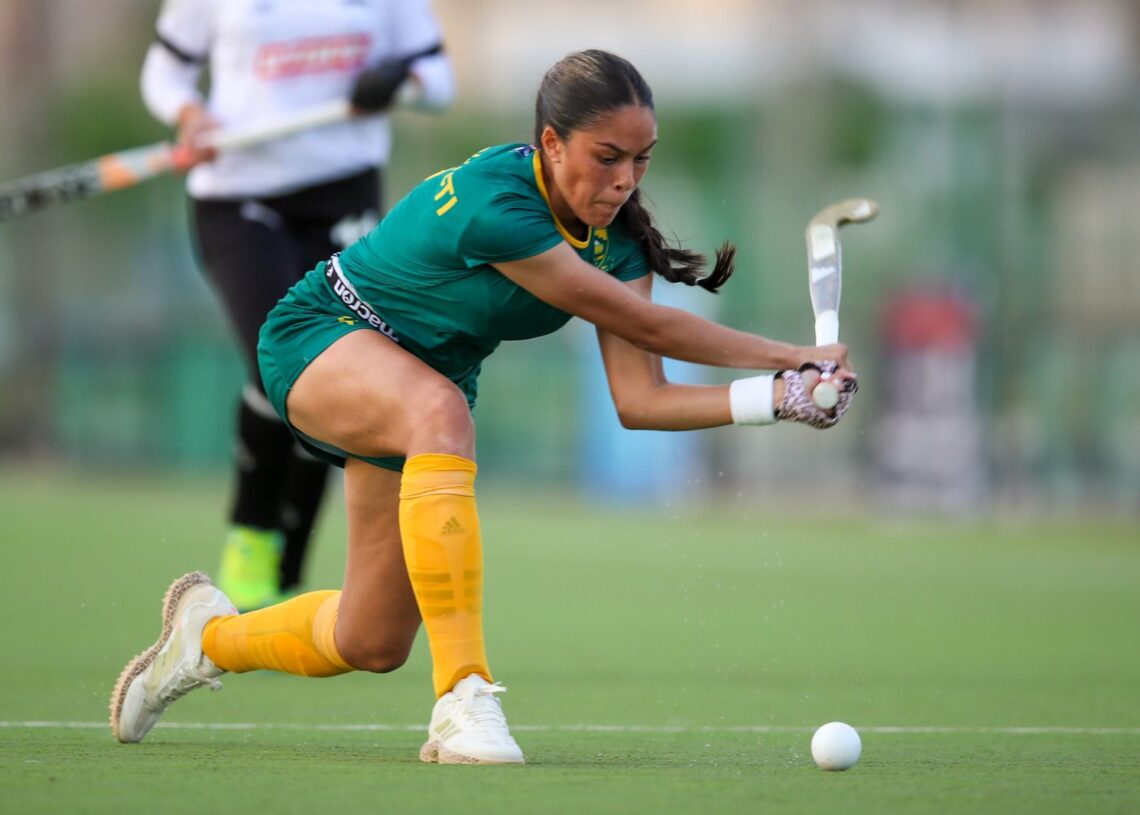In Ismailia, Egypt, South Africa have announced themselves with authority at the African Hockey Cup of Nations 2025, balancing swagger with steel as the men brushed aside Kenya 3-1 after an administrative walkover and the women thrashed Egypt 10-0 before holding off Ghana 3-2. The early returns suggest a united push from two defending champions, each intent on setting the tone for another shot at continental glory.
Men find rhythm against Kenya after walkover
The men’s campaign began with a 5-0 walkover against Zambia when the opposition failed to honour their Saturday fixture. That result put points in the bank, but Sunday’s meeting with Kenya was the true on-field opening, a chance to measure sharpness and cohesion under tournament pressure.
The afternoon carried emotional weight as Cullin de Jager, Ryan Mann, Ayakha Mthalane and Niel Raath all earned their senior international debuts. Stepping into the green and gold at a continental championship is as much about nerve as it is about skill, and their presence symbolised the depth and renewal within this squad.
After a cagey first quarter, the breakthrough arrived through familiar chemistry. Captain Dayaan Cassiem combined superbly with his brother Mustapha, who whipped a precise pass across goal for Keenan Horne to finish on the reverse. It was a signature South African move, quick, incisive, and laced with confidence.
The lead doubled from a set piece, a weapon that often separates contenders from the rest. Mustapha Cassiem took charge at the penalty corner, driving a fierce drag flick into the net for 2-0 at halftime. Control of territory and rhythm flowed from there, a reminder of the champions’ poise.
Kenya punched back in the third quarter, showing grit and opportunism at a penalty corner. A scramble in the circle ended with Bethuel Masambu pulling one back, and the contest briefly tilted towards tension as Kenya sought to press.
South Africa steadied quickly, leaning again on set-play precision. From another penalty corner, Calvin Davis swept a low, crisp finish into the corner, restoring the two-goal cushion and closing the door on Kenyan ambitions. The 3-1 final reflected both attacking variety and calm game management.
The champions now turn towards a marquee collision with the hosts. The looming meeting with Egypt on Tuesday promises intensity, noise and high stakes, and it will test South Africa’s blend of flair, structure and newfound depth.
Women make a statement against Egypt
The women’s side opened with a thunderclap, a 10-0 dismantling of Egypt that underlined the depth and hunger of the reigning champions. For Caylin Maree, Jeanri Thomas and Ane Janse van Vuuren, the day doubled as a milestone, their first senior caps in the green and gold arriving in a performance that crackled from the start.
Inside three minutes, the pressure told. Thati Zulu met a smart move initiated by Taheera Augousti, then buried a reverse finish with conviction. The tone was set, and the tempo hardly dropped.
Moments before the first-break hooter, Ntsopa Mokoena showed poise beyond her years, rounding the goalkeeper and slotting home. Two goals up, South Africa had the scoreboard and the initiative.
The second quarter became a showcase of options and execution. From a penalty corner, Hannah Pearce drove a low drag into the net for 3-0. Soon after, a slick interchange sent the ball to Ongeziwe Mali, who spun neatly and finished, then Kayla de Waal converted after a dazzling run by Stephanie Botha, a sequence that amplified South Africa’s attacking layers.
Egypt resisted in the third quarter, but the dam finally burst again in the closing phase. Augousti reacted first to a rebound to lift home, then added another with a crisp reverse from a Tegan Fourie assist. Kayla de Waal struck again to make it eight, Fourie smashed in a drag flick, and Zulu sealed double figures from a tight angle. Ten goals, and almost as many statements about intent.
Ghana test the champions character
Against Ghana, the continent’s second-ranked side, the champions faced the kind of examination that reveals tournament mettle. After dominating the early exchanges, South Africa earned a penalty stroke, but Quanita Bobbs sent her effort wide. The miss introduced jeopardy, yet it also sparked a response built on patience and craft.
Late in the first quarter, Zulu delivered a pass threaded into space that cut the Ghanaian backline open. Ongeziwe Mali chased to the flank, shaped her body, and finished with composure for a deserved 1-0 lead at the break, the kind of goal that rewards clarity under pressure.
Early in the second quarter, South Africa doubled the advantage from a penalty corner as Jean-Leigh du Toit fired low and hard. Mali then timed her movement for a sharp first-time finish that stretched the lead to 3-0, a cushion that looked, briefly, like a cruise.
Ghana refused to fold, and momentum flipped before halftime. Two penalty corners landed, one for Adwoa Amoah and one for Mavis Berko, slicing the deficit to a single goal and shifting the emotional balance of the contest.
The second half evolved into a chess match, with the champions digging in. They repelled three Ghanaian penalty corners, navigated two green-card suspensions, and found enough composure to keep control of the circle. No further goals arrived, and the narrow win felt as valuable as any runaway scoreline.
The result kept South Africa on top of the log with six points from two matches, a perfect start that reflects both the sparkle of a rout and the grit of a one-goal squeeze.
Patterns that define South Africa’s start
Set pieces have carried real weight, and South Africa are cashing in. Across both teams, the penalty corner has been a platform for momentum, from Mustapha Cassiem’s thunderous flick to Hannah Pearce’s accuracy, to Tegan Fourie’s power and Jean-Leigh du Toit’s precision. The technical polish at the top of the circle has become a recurring separator.
There is artistry in open play too. The Cassiem link for Horne against Kenya, the Zulu vision that unlocked Mali against Ghana, and the surging run from Stephanie Botha that teed up Kayla de Waal against Egypt, each moment showed an elasticity of ideas. These combinations suggest rehearsed patterns meshing with instinct.
Fresh faces are adding energy. For four men to debut in a winning performance, paired with three first caps in a 10-0 statement by the women, illustrates a pathway that blends experience with renewal. In knockout tournaments, that injection of debut hunger can tilt close contests and sustain intensity across a packed schedule.
Key moments that swung matches
- The Cassiem brothers to Horne against Kenya, a reverse-stick finish that steadied nerves,
- Zulu’s threaded pass to Mali against Ghana, a line-breaking ball that delivered control in a tense first quarter,
- Pearce and Fourie from penalty corners against Egypt, emphatic reminders that set pieces decide titles.
What comes next in Ismailia
For the men, Tuesday’s date with the hosts Egypt is a measuring stick, an occasion that reliably brings intensity and fine margins. The penalty corner battle will be crucial, as will the Cassiem-led creativity that carved Kenya open, and the calm heads that closed that game out after a Kenyan pushback.
For the women, the duality of their start is instructive, a fireworks display against Egypt followed by trench work against Ghana. That blend of ruthless finishing and defensive control, especially under set-piece pressure, will serve as a blueprint for the remainder of the campaign.
The bigger picture for South African hockey
Titles are defended with range, not just highlights. The early days in Ismailia have shown South Africa’s range, big wins, cool heads under stress, debutants eased into meaningful minutes, and leaders standing tall in critical moments. It is the profile of a group with shared belief, reinforced by winning habits and smart structures.
The women are the reigning African champions, and their twin opening wins carry the weight of that badge. The men have started with assertion, first on paper and then on turf, and now face a test that often shapes a campaign’s narrative arc. In both camps, confidence is rising in tandem with standards.
Control the circles, own the set pieces, and trust the combinations. That has been South Africa’s early formula in Ismailia, and so far it is working.
From the Cassiem brothers’ artistry to Mali’s cool finishing, from Bobbs’ response after a missed stroke to the power at the top of the circle from Pearce and Du Toit, the tournament’s first chapters have offered a catalogue of moments and lessons. The scoreboard matters, but so does the way a team grows into itself. South Africa have begun with purpose, and if these performances are any indication, the rest of the African Hockey Cup of Nations is set to showcase a champion’s evolution in real time.






